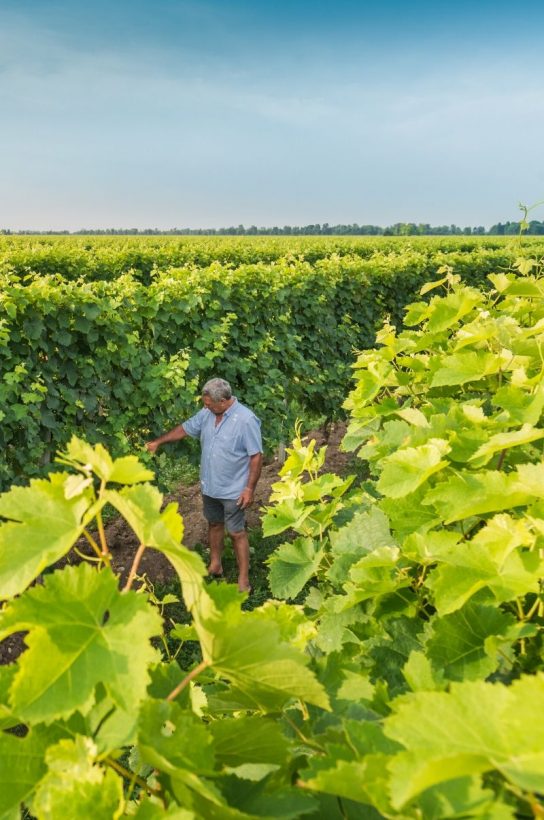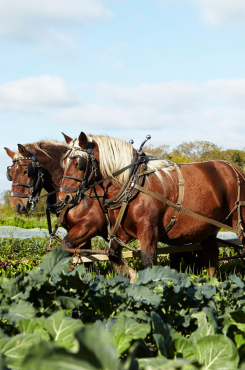Bubble standards: protecting the image of prosecco
Published 17 December 2019
by Chloë Hamilton

Prosecco is in danger of becoming a parody of itself. But is there more to the Italian sparkling wine than hen parties and supermarket discounts? Chloë Hamilton takes a tour of vineyards to meet producers and taste the products – and finds out more about why the drink’s image and availability is now being protected
In a farm shop in deepest South Devon, between the butcher and the baker counter, a greeting card in a carousel display reads: “Prosecco. How classy ladies get smashed!” And on the notebooks on sale next to it: “Hand me the Prosecco and watch me get fabulous!” Upon returning from a visit to the prosecco region of north-eastern Italy recently, I’ve been haunted by cringeworthy references to prosecco at every turn, plastered on all sorts of paraphernalia from wall-plaques to playing cards to coasters and knitwear. In the past eight years, as UK consumption has increased by a staggering 1,000%, the fun-loving fizz appears to have penetrated the deepest recesses of British culture. It’s utterly ubiquitous.
That said, sensationalist headlines claiming sales are falling flat are cropping up with increasing frequency. And whist this isn’t strictly true (exports to the UK were up 8.7% year-on-year in the period of January – May) it’s clear that prosecco is faltering under the weight of its mass market success. It’s a familiar story arc in the world of wine: The UK is still shaking off the last vestiges of chardonnay fatigue from the overoaked, mass produced plonk pedalled so successfully in the 90s. And the current fascination with a New Zealand sauvingon blanc is almost certainly heading towards a similar backlash.
The Prosecco DOC Consortium, based in the picturesque Italian city of Treviso, is on a mission to preserve the integrity of the prosecco brand. Beyond protecting the geographical delimitation and the oenological and viticultural methods, they’re busy regulating and monitoring how the sparkling wine reaches the consumer; for example, prosecco served in cans or on tap is strictly not permitted. At the time of our visit to the consortium in September, they were fighting more than 30 cases of misappropriation of the brand, including a lengthy legal dispute against a trademark application for ‘Pawsecco’ from Woof and Brew Ltd. Dramatically, in October, Italian fraud officials seized hundreds of tubes of prosecco flavoured Pringles, forcing Kellogg’s to discontinue the product.
Whilst the UK reigns supreme in its consumption of prosecco, the surge in popularity is reaching all corners of the globe. At the Astoria winery, just off ‘Prosecco Road’, we’re shown a weird and wonderful range of products and packaging tailored to Asian markets, and intricate cut-glass clear bottles that particularly appeal to the US market. Its appeal is truly universal. Made from the local Glera grape (which until 2009 was called Prosecco), the classic expression is of apples, pears and white flowers, balances moderate sweetness and acidity, and is best consumed when fresh and young. The short second fermentation (30 days) in stainless steel tanks means lees aging is uncommon and so there are few secondary and tertiary characteristics to uncover. It’s easy to understand, easy to enjoy and, quite importantly for a global product, it’s easy to pronounce.
Prosecco also hits the market at an incredibly attractive price point, honouring a sense of occasion for less than £10 a bottle, whilst remaining drinkable. But this is a big part of the issue. “The UK has the worst example of prosecco on the market,” laments Francesco Galardi from La Jara, an organic winery just outside of Conegliano. “And the problem is pricing.” Whilst the base product is relatively inexpensive, the cost of tanks and production machinery is high, so to compete for UK business, where margins of 1p decide contracts, economies of scale are crucial.
Where on the consumer end, most people take their pick of prosecco based on price – quite often choosing ‘the one on offer’ – the real cost is a producer having to cut corners to make their margins work. The result is a consumer base that knows no better than the most basic examples of prosecco.
In Italy, there’s a different perception. Still seen as a versatile, straightforward fizz, tastes lean toward Conegliano Valdobbiadene Prosecco DOCG, of which 60% is consumed domestically, compared with 25% of Prosecco DOC. Amongst the sweeping vistas of the foothills of the Dolomites, where DOCG prosecco is produced, steep slopes yield higher quality fruit, whilst hand harvesting ensures better selection. But naturally, this increases the cost per bottle. Furthermore, Italians prefer a ‘brut’ style of prosecco, containing up to 12 grams. of sugar per litre, whilst in the UK ‘extra dry’ dominates, containing up to 17g/l. Drier styles don’t necessarily equate to a better wine, but a higher dosage of sugar is a convenient way to mask imperfections in the base wine.
In the fight against stagnation, organic prosecco is of increasing interest to northern European markets. It’s often a marker of better quality given the integrity of winemaking required to obtain the classification. At VALDO winery, a large producer based in Valdobbiadene, their organic range has a second fermentation of three months in order to produce smaller, softer bubbles, whereas non-organic methods allow for chemical additives to replicate the same effect in a shorter timeframe. At La Jara, the Asian stink bug has been a particular grievance, as the only way to protect the crops organically is a specialised machine that blows puffs of air directly onto the vines. This kind of investment and labour inevitably pushes up production costs, making La Jara’s prosecco higher than usual for a DOC classification.
Right now, the prosecco fatigue is opening up interest in alternative sparkling wines. Whilst cava is still struggling with its own image problem, French crémant has seen strong growth, as have sparkling wines from South Africa and New Zealand. And there’s never been a better time to delve into the world of English sparkling wine. But it would be unfair to turn away from prosecco completely. Suspend your prejudice and spend £5 more on a bottle of prosecco than you usually would, and what you’ll find in your glass is a completely different story.
ТHREE TO TRY
Fantinel ‘One & Only’ Single Vineyard Prosecco Brut
A premium single-vinyard prosecco with fruit from vineyard =Tauriano di Spilimbergo in the Grave del Friuli region. Awarded Gold at the Sommelier Wine Awards 2019.
matthewclark.co.uk
La Jara Prosecco Brut Organic
Just 6g of residual sugar and made with 100% Glera. A second fermentation of 45-60 days produces a wine with smaller bubbles and an elegant form. 100% organic and family run.
thewhiskyexchange.com
Bisol Belstar Organic Prosecco DOC NV
Considered royalty in the prosecco region, the Bisol family have handed down their winemaking skills for 21 generations. Unusually all of the grapes come from their own vines.
bibendum-wine.co.uk
This article was first published in the Winter 2019 Issue of the CODE Quarterly. To subscribe, please click here




